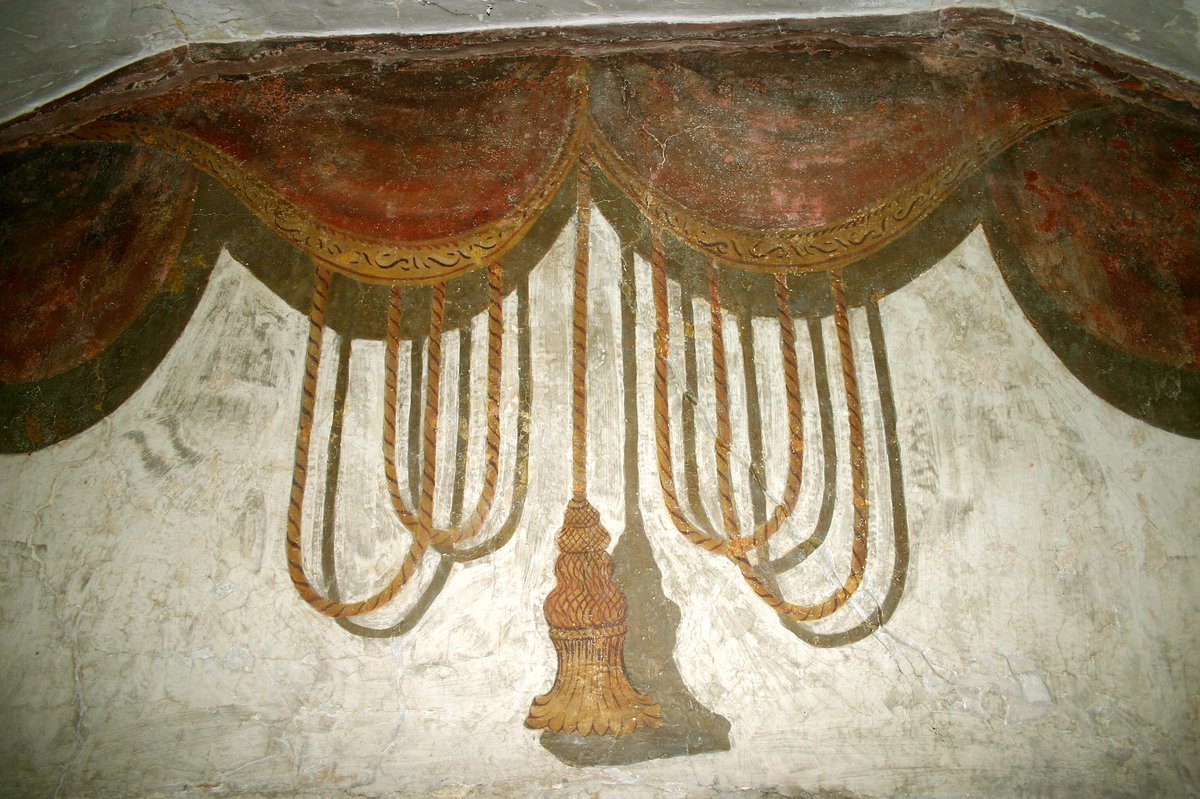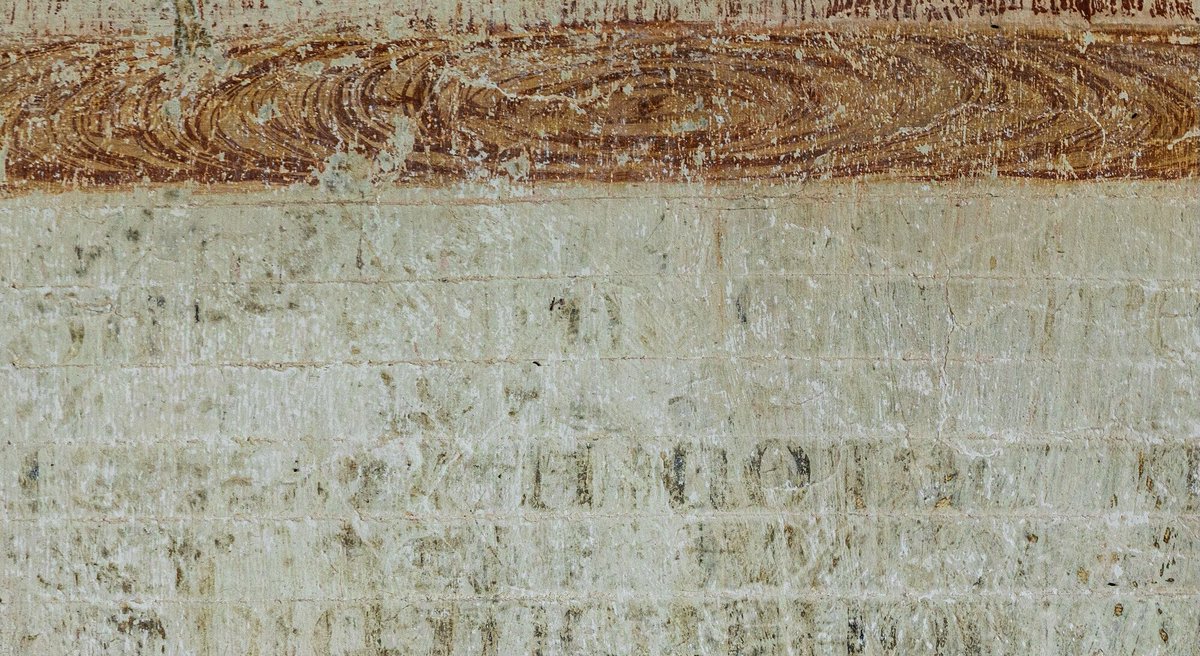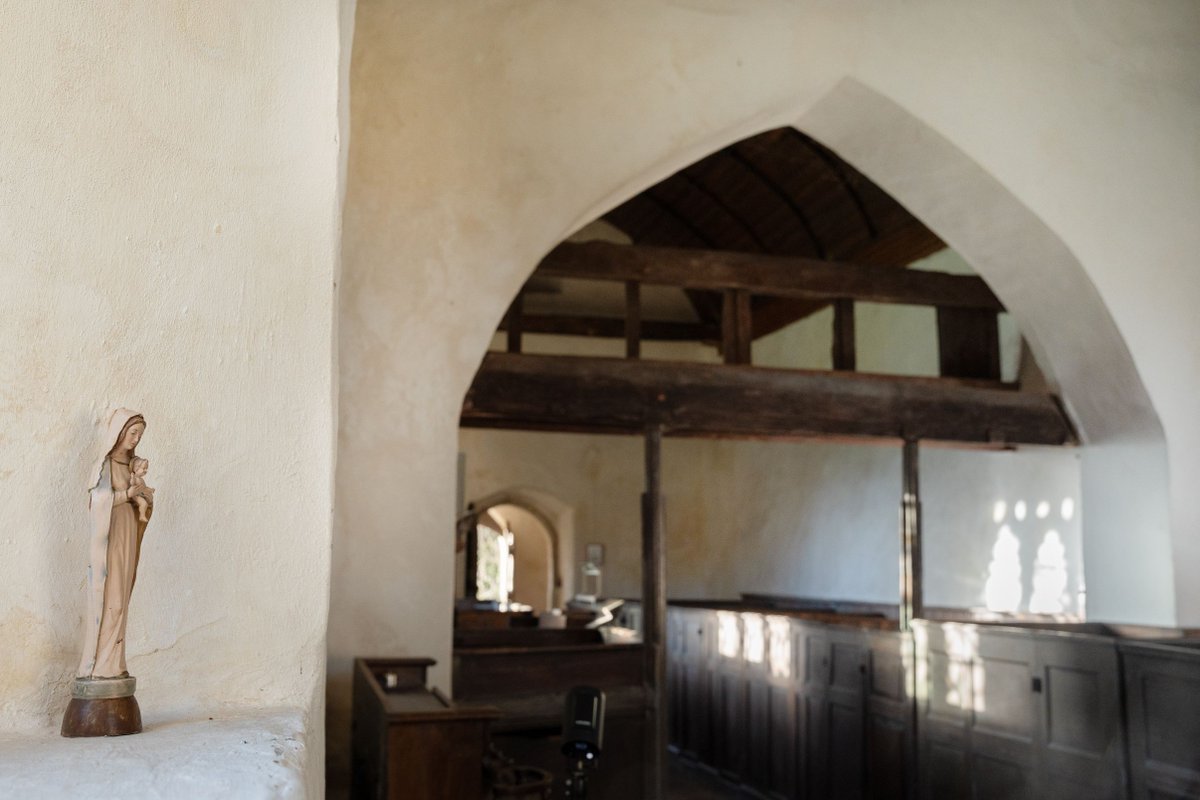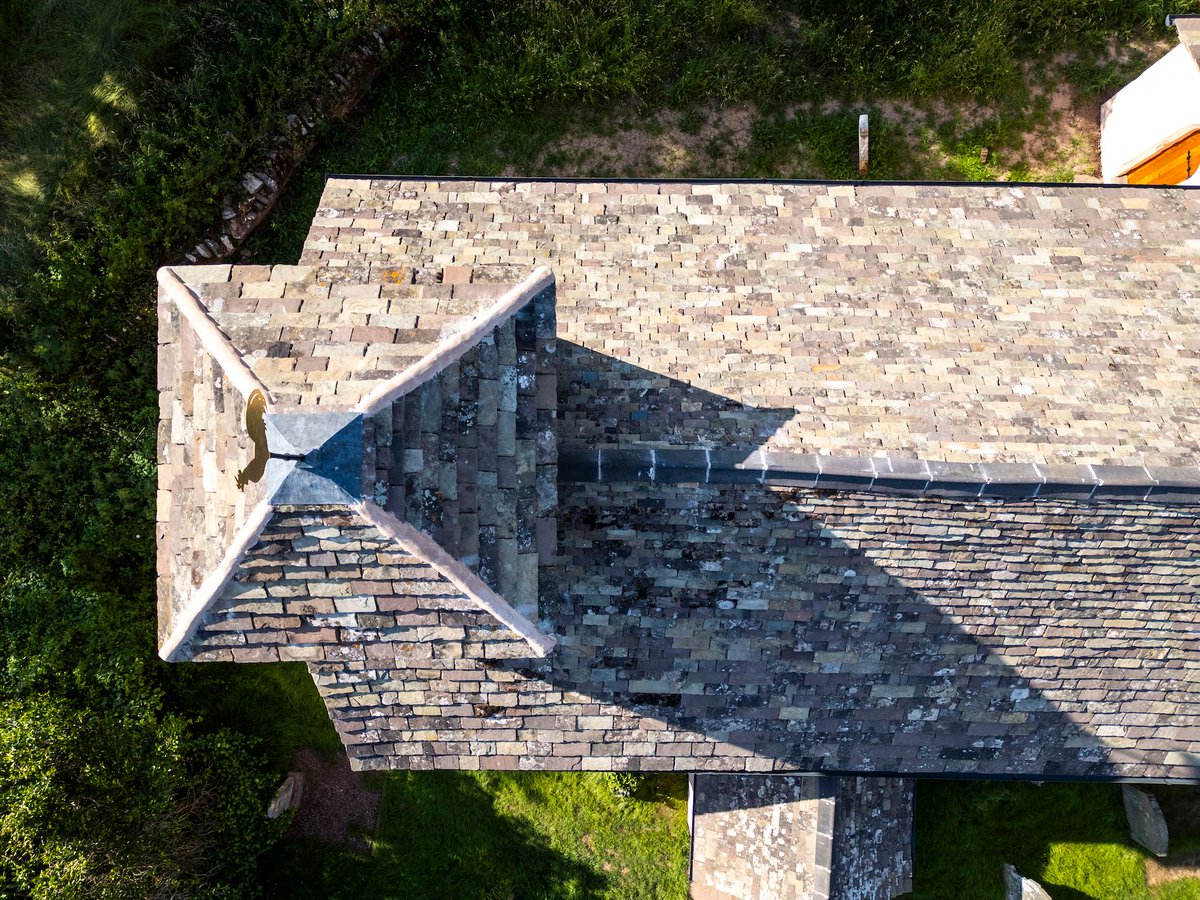In some of our churches not all is what it seems. Marble columns that appear round and richly carved recede to painted curlicues. Velvet curtains that hang sumptuously are nothing more than daubed oils. Varnished woodwork the work of an illusionist.
#thread
#thread

Because that's what these are: illusions. Or, to give the proper name, it's trompe l'oeil - a French term that literally means deceives the eye. It's a technique to trick the viewer into perceiving a flat painted detail as a 3D object.
2/
2/

At St Mary's, Mundon in Essex, the east wall has Baroque-style Commandment boards feigned in pink squiggly marble and suspended from impossibly delicate ties.
3/

3/


Over the east window, heavy painted velvet curtains are held open by rope ties and tassels. All throwing dark shadows to trick the viewer even more. This extravagant east-end is so unexpected in this otherwise wholesome, vernacular church.
4/
4/

In the medieval church of St Ellyw, Llanelieu in Powys, countless layers of historic wall-paintings break through the white-wash, offering up snatches of feet, flowers, verses and coats of arms.
5/
5/

Immediately as one enters, they are greeted with a large lion rampant guardant painted in golden ochre. Its eyes are empty, St Edward's crown perched on top of its head.
(Zoom in to see the detail.)
6/
(Zoom in to see the detail.)
6/

The lion was a dexter supporter of a royal coat of arms, the entire heraldic achievement is enclosed by a trompe l'oeil timber frame. The painter going to great efforts to imitate wood-grain. This technique is also seen on a couple of smaller textual panels in the church.
7/
7/

So the next time you visit these churches, take a second look. The artists of the 18th century are still tricking eyes hundreds of years later.
8/8
8/8

• • •
Missing some Tweet in this thread? You can try to
force a refresh






















